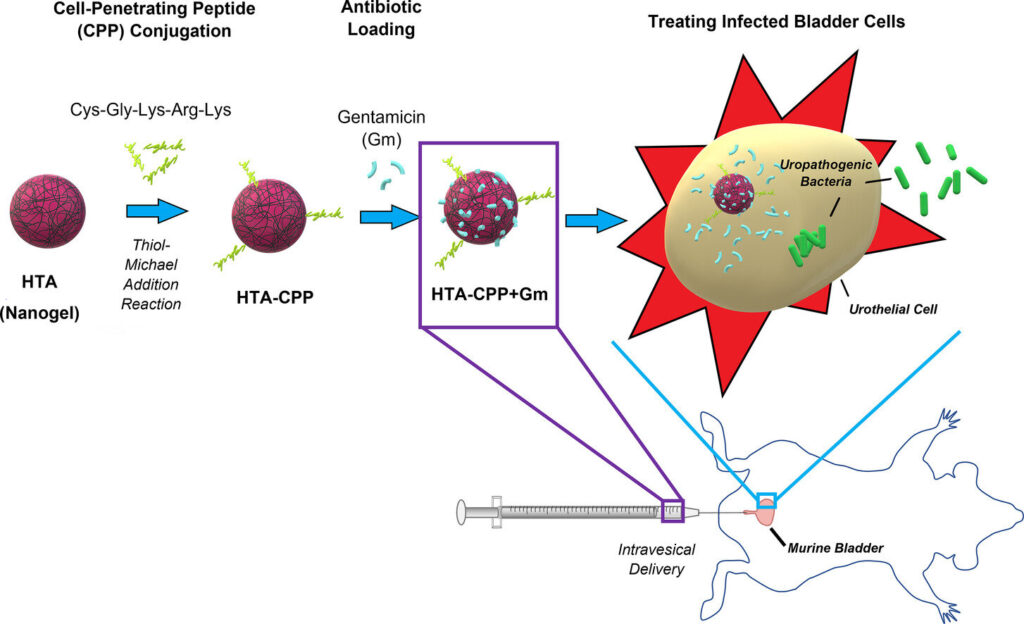Researchers from the University of Colorado Anschutz Medical Campus studied a new method to deliver antibiotics, specifically gentamicin, directly into the bladder tissue to better treat UTIs. They did this by creating nanogels combined with a special peptide (a small protein) that helps the drug get inside the cells where the bacteria are hiding.
The results, published in Nanomedicine: Nanotechnology, Biology and Medicine, demonstrate that this approach proved highly effective when tested in animal models with UTIs, eliminating over 90% of the bacteria from the bladder.
“We prove not only that this technology is doable but could be very effective for future clinical use and can potentially lead towards an eventual cure of recurrent infections,” said the paper’s senior author Michael Schurr, Ph.D., associate professor in the Department of Immunology & Microbiology at the University of Colorado School of Medicine.
A more effective treatment option
The researchers discovered that nanogel technology can carry more than enough gentamicin to be effective—about 36% more gentamicin inside cells compared to standard antibiotic delivery methods. Additionally, it exhibits low toxicity, causing minimal harm to cells.
They also found that nanogels release the drug quickly, which helps kill bacteria in the bladder faster.
“We believe this new approach offers a more effective treatment by delivering the drug directly to the infected cells, allowing it to precisely target and eliminate the infection. This method minimizes side effects and reduces the risk of antibiotic resistance. In contrast, current antibiotics may require prolonged or repeated therapy to be effective, which can contribute to resistance and cause harmful side effects, especially in organs like the kidneys,” said the paper’s co-author Devatha Nair, Ph.D., associate professor in craniofacial biology, whose research focuses on developing polymer-based biomaterials, at the University of Colorado School of Dental Medicine.
The researchers note that this nanogel-based drug delivery method could have applications beyond UTIs. For instance, the concept of using nanogels for treatment administration originated from the CU School of Dental Medicine as a potential approach for treating periodontal disease.
Research made possible by a multidisciplinary team
This study was conducted by experts across multiple schools and colleges on the CU Anschutz Medical Campus. While the nanogels were developed in Nair’s polymer lab in the CU School of Dental Medicine, the peptide was studied and characterized in another lab on the CU Anschutz Medical Campus—Dmitri Simberg’s, Ph.D., lab in the University of Colorado Skaggs School of Pharmacy and Pharmaceutical Sciences.
Humberto Escobedo, Ph.D., the lead author of the paper, developed a targeted drug delivery system by combining polymer chemistry, pharmacology, microbiology and urogynecology.
As a clinician-scientist and urogynecologist, Marsha K. Guess, MD, MS, and her team worked with Schurr’s lab to develop and test this approach in a manner that maximizes its translational potential in humans.
“This is an exciting advancement for the delivery of medicine and the potential to improve the quality of life for many people. For urinary tract infections, they are not only common and costly but also debilitating, severely affecting the quality of life for those who suffer from them. Advancing research to develop more effective, long-lasting treatments is a crucial step in enhancing overall health and well-being,” said Schurr.


